Sales of Lucifer’s Hammer jumped this weekend as the corona virus brought back memories of Harvey Randall and marauding bandits presaged the end of times.
If it’s been a bit since you’ve read Lucifer’s Hammer, why not sit out the Covid-19 apocalypse with a fresh eBook or Audio track?
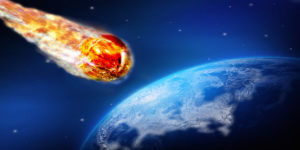
WHAT HAPPENS IN A METEOR STRIKE? Ballistically Reentering Ejecta
Sixty-five million years ago the cataclysmic impact of a gigantic meteor disrupted the world’s climate and wiped out most flora and fauna on Earth, including the dinosaurs. As in Lucifer’s Hammer, a few seconds after the body struck just north of what is now Mexico’s Yucatán peninsula, a cloud of dust enveloped the globe, and huge tsunamis surged hundreds of miles inland. And then the endless rain and fire…
Some of the damage is easy to assess. The crater created by the impact is over 110 miles in diameter, a massive scar half covered by the Gulf of Mexico. But the devil is in the geological details at places around the world, such as signs of a massive tsunami around the Gulf coast. The impact struck with so much force and displaced so much water that within 10 hours an immense wave tore its way along to the coast.
What settled out is a geologic mess: ocean sand on what would have been dry land, and fossils of land plants in areas that should have been the ocean, in a mixed up slurry of ancient sediment. In the part of the world where the tsunami struck, these layers mark a violent boundary between the last day of the Cretaceous and the first of the following period, the Paleocene.
Not that the effects were limited to the area of impact. The blast was enough to cause geologic disturbances, such as earthquakes and landslides, as far away as Argentina—which in turn created their own tsunamis.
As dangerous as the waves were to life in the western hemisphere, however, the heat was worse.
When the asteroid plowed into the Earth, tiny particles of rock and other debris were shot high into the air. Geologists have found these bits, called spherules, in a 1/10-inch-thick layer all around the world.
“The kinetic energy carried by these spherules is colossal, about 20 million megatons total or about the energy of a one megaton hydrogen bomb at six kilometer intervals around the planet,” says University of Colorado geologist Doug Robertson. All of that energy was converted to heat as those spherules started to descend through the atmosphere 40 miles up, about 40 minutes after impact. As Robertson and colleagues wrote in a paper titled “Survival in the First Hours of the Cenozoic”: “For several hours following the Chicxulub impact, the entire Earth was bathed with intense infrared radiation from ballistically reentering ejecta.”
Earth became a world on fire. The friction of falling made each spherule an incandescent torch that quickly and dramatically heated the atmosphere. Any creature not underground or not underwater—that is, most dinosaurs and many other terrestrial organisms—could not have escaped it. Animals caught out in the open may have died directly from several sustained hours of intense heat, and the unrelenting blast was enough in some places to ignite dried-out vegetation that set wildfires raging.
On land, at least, much of Cretaceous life may have been wiped out in a matter of hours. The heat pulse and its after-effects alone severely winnowed back life’s diversity. But the situation turned out to be even more dire.
ARE YOU PREPARED?
WHAT TRIBE ARE YOU JOINING FOR THE END OF THE EARTH?
ARE YOU PREPARED TO BE CANNIBAL, BIKER, SOLDIER OR FARMER ?
Lucifer’s Hammer is a science fiction post-apocalypse / survival novel by American writers Larry Niven and Jerry Pournelle, first published in 1977. It was nominated for the Hugo Award for Best Novel in 1978. A comic book adaptation was published by Innovation Comics in 1993.
“about a megaton of suspenseful excitement”
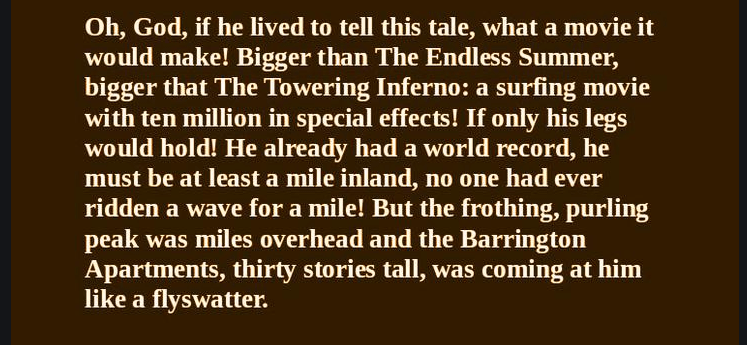
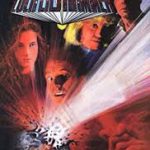
FROM THE NATIONAL SPACE SOCIETY
Lucifer’s Hammer is probably the first novel to describe realistically the effects of a comet striking the planet Earth. Rather than a hero story, like the movies Armageddon and Deep Impact, Lucifer’s Hammer is more like a 1970s disaster film, such as The Towering Inferno, Earthquake, or the awful Meteor
The first part of the novel describes characters living in urban and rural Southern California. The main characters (the ones who would be played by the big-name stars in a movie) include Tim Hamner, a millionaire and amateur astronomer who discovers the comet; Senator Arthur Jellison, a conservative lawmaker who owns a farm in the San Joaquin Valley; Maureen Jellison, his daughter and political aide; and Harvey Randall, a filmmaker who makes a documentary about Hamner’s comet (later called “The Hammer”). Other players are often caricatures: cops, socialites, secretaries, political functionaries, gang members, fundamentalist preachers, scientists, and even a heroic mailman.
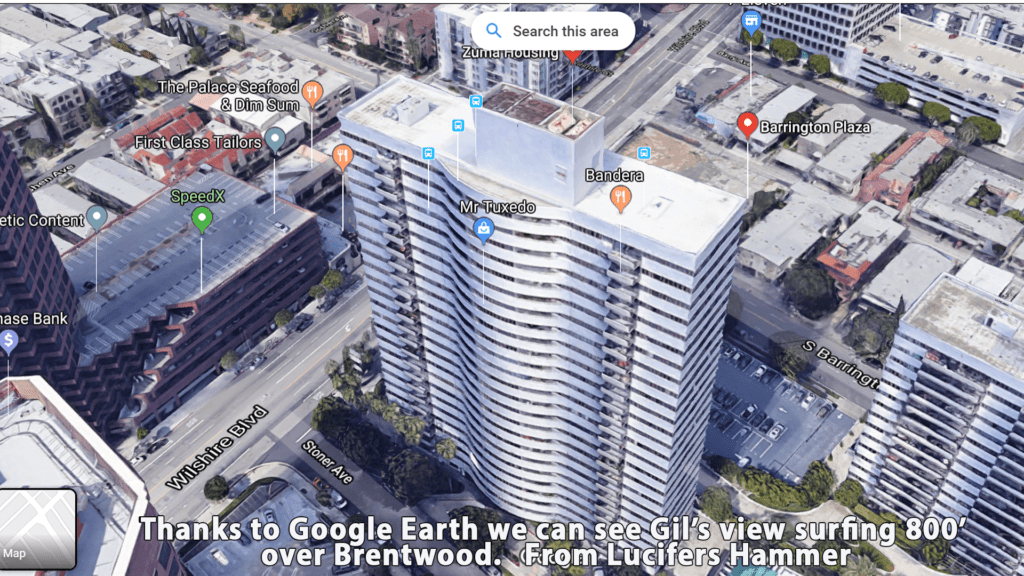
PLOT OF LUCIFERS HAMMER
When wealthy soap company heir and amateur astronomer Tim Hamner co-discovers a new comet, dubbed Hamner-Brown, documentary producer Harvey Randall persuades Hamner to have his family’s company sponsor a television documentary series on the subject. Political lobbying by California Senator Arthur Jellison eventually gets a joint Apollo–Soyuz (docking with Skylab B) mission into space to study the comet, dubbed “The Hammer” by popular media, which is expected to pass close to the Earth.
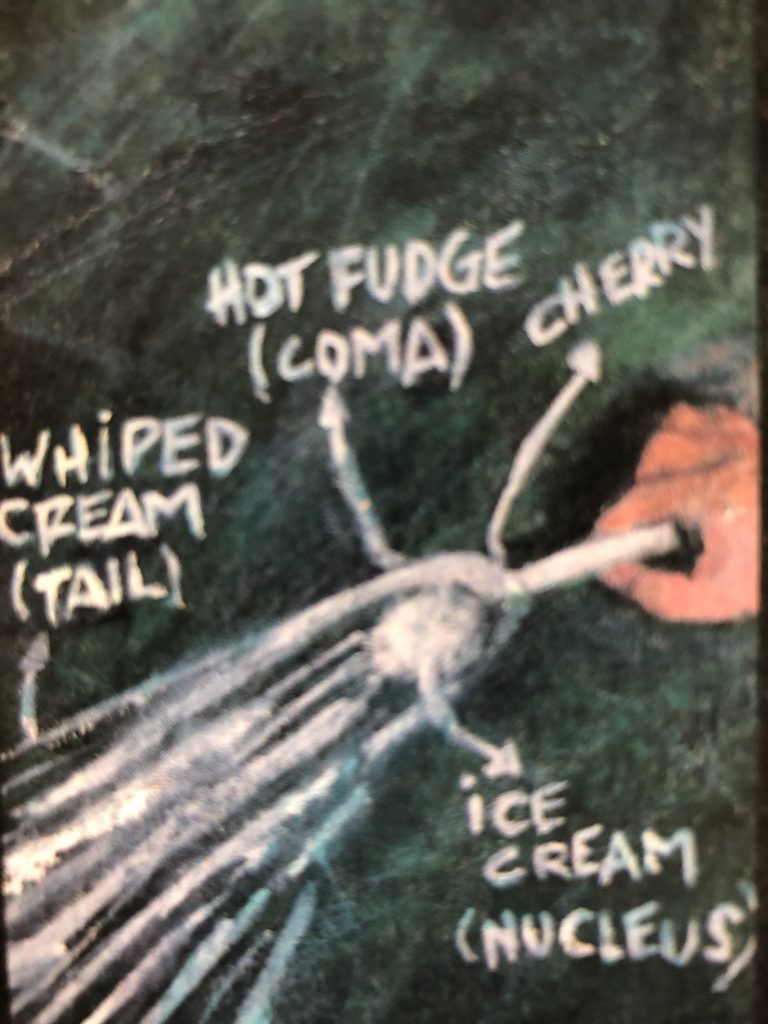
Despite the scientific community repeatedly assuring the public that a collision with Earth is extremely unlikely, pieces of the comet’s nucleus impact across the western hemisphere with devastating results. The strikes on parts of Europe, Africa, the Gulf of Mexico, and both the Pacific and Atlantic Oceans set off volcanoes, destabilize fault lines, including the San Andreas fault, and cause tsunamis thousands of meters high, destroying major coastal cities around the world, killing billions and initiating long-term climate problems due to the massive quantities of vaporized seawater in the atmosphere.
Immediately after the strike, China, anticipating the coming ice age launches a preemptive nuclear attack on Russia. The last Soviet Premier reassures the US that they are not the target, and he requests help against the unprovoked attack.
Jellison’s ranch forms the center post of a fiefdom in the Sierra foothills, dubbed “the Stronghold” where he presides over a small population of survivors, including Randall and Hamner, who struggle to maintain civilization.
Shortwave radio, the only surviving means of mass communication, is eagerly monitored and reveals a chaotic situation after the Fall. Several people, including some who were previously officials of the former United States Government, claim to be the new or currently acting President of the United States, while others are now self-proclaimed monarchs of various regions or areas. Many people subsist by looting former stores and by catching rats and various fish, especially the now-plentiful giant carp, which are mostly either former pet goldfish or their progeny, engorged by the massive supply of food available to them, primarily in the form of human and animal corpses. Some advanced technical knowledge was maintained by the means of the preservation of a collection of books which had been wrapped in impermeable plastic and submerged in a septic tank shortly after Hammerfall and later retrieved by a JPL scientist who realized their potential value and likely scarcity in a post-Hammer world.
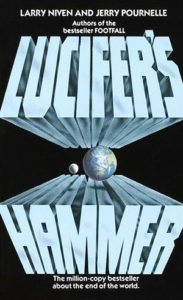
Reverend Henry Armitage manages to take control of a cannibalistic group of petty thieves and the remnants of a former United States Army unit, integrating them into his pre-existing band of followers, the New Brotherhood Army. The Reverend’s forces begin a rampage through the area, culminating in a series of battles with the inhabitants of the Stronghold. Jellison’s force prevails with the help of chemical weapons, saving the Stronghold while also defending a nuclear power plant nearby, thus preserving a supply of electric power needed to rebuild civilization.
Tropes demonstrated in Lucifer’s Hammer:
After the End: Unusually for this type of story, the cometary impact doesn’t happen until a third of the way in. The last two-thirds of the book is all about this trope.
The Apocalypse Brings Out the Best in People: Way, way averted. For the most part, the people who survive the end of the world do so by being selfish, murdering, thieving bastards. Even the “good guys” quickly realize that they can only survive by ignoring or turning away most of the people who need help.
Apocalypse How: Planetary/Societal Collapse caused by a comet strike. And it might’ve been even worse if the US military didn’t get the clarification that the Soviet Union was nuking China instead of the US.
Apocalypse Not: The epilogue makes it clear that the survivors are rebuilding.
Apocalypse Wow: Niven and Pournelle take about three chapters in the book to describe the utter destruction of the world, each time detailing the effects of the impact on a different region. In addition, they go to great lengths to describe the effect on the impact on individual characters, some of whom don’t survive the experience.
Author Tract: One of the morals of this story is technology (especially nuclear power and space exploration) is good, while environmentalists, the fanatically religious, and hippies are bad.
Badass Bookworm: Professor Forrester. A charming old man who never raises a hand nor his voice. The cannibals learn to fear the survivors because he knows how to make mustard gas and thermite bombs. Unfortunately, making the gas cost him the time and resources he needed to make his insulin, so he’s another casualty of the defense of the nuclear plant.
But What About the Astronauts?: The multi-national crew of astronauts on the HammerLab (specifically sent up to study the approaching comet) provide a running commentary regarding the approach, and likewise continue to feed information for as long as people keep responding on Earth. When it becomes clear that the space program that put them in orbit is now nothing more than a memory, they decide to return to Earth to see what’s left. Not that they have much choice; as their supplies will only last so long….
The survivors use these to guard their roadblocks. Try to take the guards hostage and Boom, Headshot!.
Marie Vance surprisingly turns into one of these during the defense of the Stronghold against the New Brotherhood.
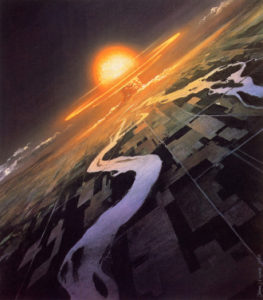
Comet of Doom: The Hamner-Brown comet itself. At first, no one thinks it is going to hit the Earth. But then the margin of error keeps getting smaller and smaller….
Covert Distress Code: There are two sentries guarding the settlement at any time: an outer sentry to talk to people trying to enter, and a hidden inner sentry who watches and guards the outer sentry. If the outer sentry raises both hands over his head, this is the signal for the inner sentry to shoot the person at the gate, presumably because that is the one gesture least likely to get you killed if someone is pointing a gun at you. Acts as a Shout-Out to Rudyard Kipling.
Cozy Catastrophe: At the end, one of the heroes is celebrating the fact that he and his family (and his friends) have survived the winter, everything’s rebuilding, and the future looks bright. Never mind that billions of people are dead and the good guys have effectively organized themselves into a feudal holding…it’s about the best that could have been hoped, really.
Dare to Be Badass: The story ends on a good one that’s directed at the reader as much as the opposing characters; they can go home and fortify their feudal holding at the cost of the world’s last nuclear power plant, or they can fight to protect and rebuild the civilization the comet destroyed.
Depopulation Bomb: The tidal waves caused by the initial cometary impact wipes out most of humanity. In addition, any geological faultlines near an impact site let go completely, causing massive earthquakes and volcano eruptions (and for the purposes of the story, “nearby” means “within a thousand miles”) killing many of those who survive the tidal waves. The water vaporized by the oceanic impacts condenses back into rains, causing massive flooding and destroying pretty much any dam still standing after the earthquakes, thus drowning many people too far from the coasts to be killed by the tidal waves. When you add to this onset of a new ice age caused by nuclear winter conditions, plagues caused by lack of modern medical technology and a shortage of medicine, famine, and the constant danger of bandits, it’s a wonder anyone survives to the end of the book at all.
Divided States of America: The survivors, living in and around California’s San Joaquin Valley, all make jokes about the five announcements they’ve received over short-wave radio, each proclaiming a different person President of the United States. The only one they give any level of credence to is the group in Colorado Springs because a) the person making the proclamation is the former Speaker of the House and thus might actually have legal authority and b) apparently NORAD survived and they still have nukes and working bombers. As far as they are concerned, Arthur Jellison (former US Senator and leader of the effort to organize and rebuild) is their leader. One person jokes that Jellison is ‘the Duke of San Joaquin’.
Dramatis Personae: This is a Niven/Pournelle novel, so it has a cast of hundreds. Naturally, there is a list at the beginning of the book in case you get lost.
Earn Your Happy Ending: Where surviving the apocalypse is just the first step.
Fantastic Religious Weirdness: The Reverend Henry Armitage, former radio preacher and post-apocalyptic authentic whack-job, preaches against the evils of trying to rebuild a technological society rather than just accepting God’s righteous punishment and allowing humanity to die. Oh, and being a murder/slaveholder/rapist/cannibal is okay, if you’re on God’s mission. The New Brotherhood believe him, mainly because they’ve all committed unspeakable acts and want to believe they’ve been forgiven.
Glad-to-Be-Alive Sex: There are several instances throughout the novel, which is unsurprising when it involves the survivors of an apocalypse.
Gold Digger: Marie Vance decides she’s going to marry one of the most politically powerful of the survivors, and that she will convince him that she loves him for his whole life.
Heroic Sacrifice: The manner in which Air Force General John Baker saves the nuclear power plant from the cannibal army.
 BOSS HOG: The motorcycle gang murders inspired this version of a Lucifers Hammer by Harley Davidson
BOSS HOG: The motorcycle gang murders inspired this version of a Lucifers Hammer by Harley Davidson
Taking You with Me also applies to the same scene: “At the Academy, they taught us there was one sure way not to miss…”
A theme of the book. About the only “prepared” survivors, good and bad, who don’t have part of their initial schemes blow up in their faces are Senator Jellison and Dr. Dan Forrester.
The Chinese government gets one of these, mixed with a massive Darwin Award. See Nuke ’em below.
I Did What I Had to Do: With a rapidly climbing threshold as conditions deteriorate. By the end of the book, one generally nice character is justifying slavery. One of the themes of the novel is that the good guys can only be as good as they can afford to be. They have to turn many survivors away from their fortified valley because there just isn’t food to feed them all through the winter.
I’m a Humanitarian: They started doing it just because they were starving and there was nothing else to eat, but eventually the New Brotherhood starts using forced cannibalism as an Initiation Ceremony. “Eat or be eaten.”
Jive Turkey: Most of the African-American characters sound like they stumbled out of a 1970s blaxploitation film. The novel was written in ’77.
The Last Dance/Dying Moment of Awesome:
Gil the Surfer. “If death was inevitable, what was left? Style, only style.” And so he decides to surf on the tsunami about to destroy Los Angeles.
He would have been able to ride that wave as far as it took him (several miles inland) had it not been for an inconveniently placed apartment building. Niven has since stated that, if he was writing the novel now, he would have had Gil the Surfer survive the ride.
Most Writers Are Writers: One of the survivors is a novelist who writes science fiction. Whether he’s based on Niven, Pournelle, or a combination of the two is up to the reader to decide.
The Night That Never Ends: In addition to the dust and debris thrown into the upper atmosphere, the massive amounts of water vaporized by the ocean impacts cause a perpetual 100% cloud cover (at one point in the book, it rains for a month) and thus a perpetual twilight. By the epilogue, the skies are beginning to clear again, though it still rains once or twice every day.
No Party Like a Donner Party: The remnants of a National Guard unit start off only killing and eating people because they have a hard time finding anything to eat. Later, they descend into I’m a Humanitarian territory, and use forced-cannibalism (“You can eat it, or you can be eaten. Your choice.”) as a sadistic recruiting tool, since cannibalism “indelibly marks a person, on their soul”, making said persons permanent pariahs to any “decent” folk.
Nuclear Weapons Taboo: Averted heavily due to Author Appeal.
It’s repeatedly referenced that if humanity had been just a bit more advanced – that is, just that much better at nuclear physics(and space development) – they would have been able to prevent the impact.
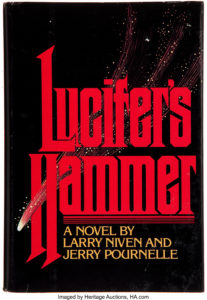
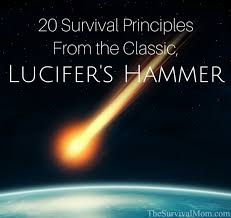
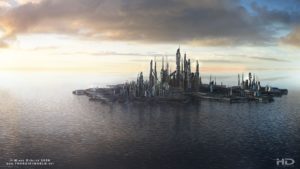 Nuclear Power is the key to saving civilization
Nuclear Power is the key to saving civilizationNuke ’em: The Chinese conclude that the Soviets that survive Hammerfall will need to migrate south to avoid future glaciers, and launch a preemptive nuclear attack on the Soviet Union. The (oddly prepared) Soviets immediately use their Nuclear Option and drop their entire Cold War arsenal on China. The USA gets in on the action when the USSR asks for the US’s help in nuking China. It’s the Only Way to Be Sure.
Another “nuclear” option shows up in the climax of the book when the main characters resort to homemade poison gas to stop the cannibal army. The idea is roundly considered horrific, but saturating the completely exposed and surprised horde with mustard gas certainly does work…
One Degree of Separation: The novel focuses on characters who all know each other or are related in some way. This helps explain why they are all accepted inside Jellison’s ranch when the majority of people who try are turned away. The heroes even know (or at least have met and have some knowledge of) the villains.
Shown Their Work: Extensive and very impressive research means that the cometary impact and its aftereffects are described in brutal, loving detail.
Unstoppable Mailman: Not even Hammerfall is going to stop Harry the mailman from the completion of his appointed rounds.
The fate of Charlie Sharps and the JPL staff that followed him is left unknown.
In universe, Harvey Randall never finds out what happened to the looters using the blue van who killed his wife and stole all of his food and supplies, though the readers are told. They ran into Alim’s group, who killed them all and torched the van with a Molotov cocktail before they knew what was inside it
The mouse? It was eaten, of course.

Hello Frank
The detailed explanation(s) you’ve provided are perfect for not-yet readers of HAMMER. I’ve told a number of folks about this book, several of whom are serious preppers, yet they could not wrap their brains around the marvelous world Dr Jerry and Larry N created for this story. Appreciate the hyperlinks; I’d be the go-to guy to explain all of this as I have told my friends and co-workers about having a 3-hour lunch with your folks back in 2010 (“James, WHAT did he mean by X?”). You fixed that.
So looking forward to more from the seriously cerebral estate of JEP! Many thanks.
I have to second James here: This page gives a really good explanation. I haven’t read the book but now I am definitely going to.